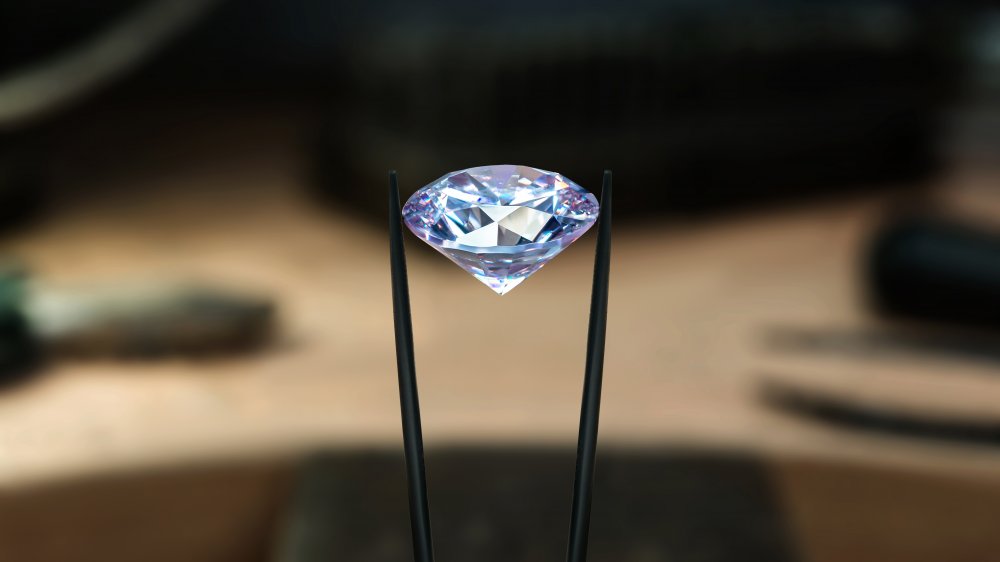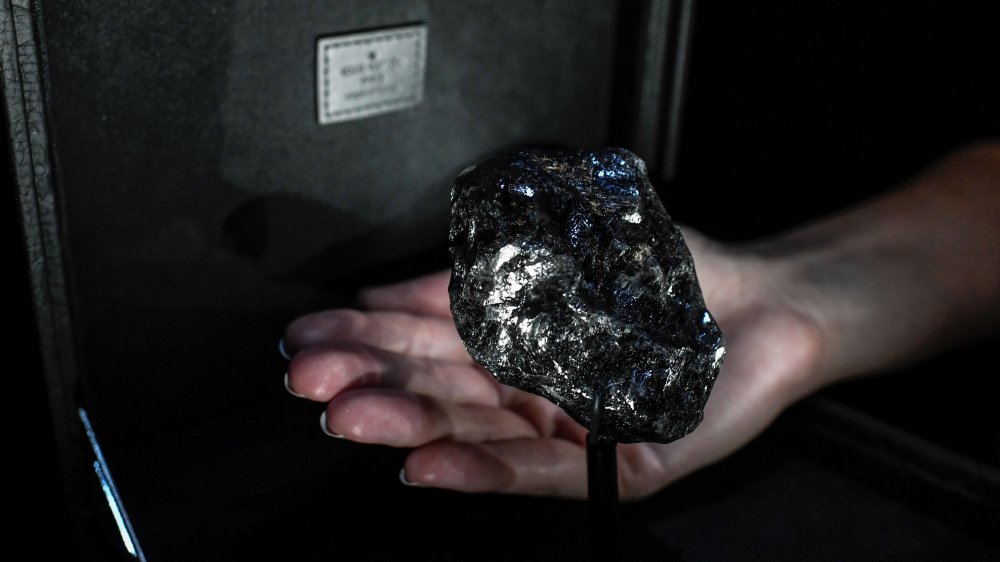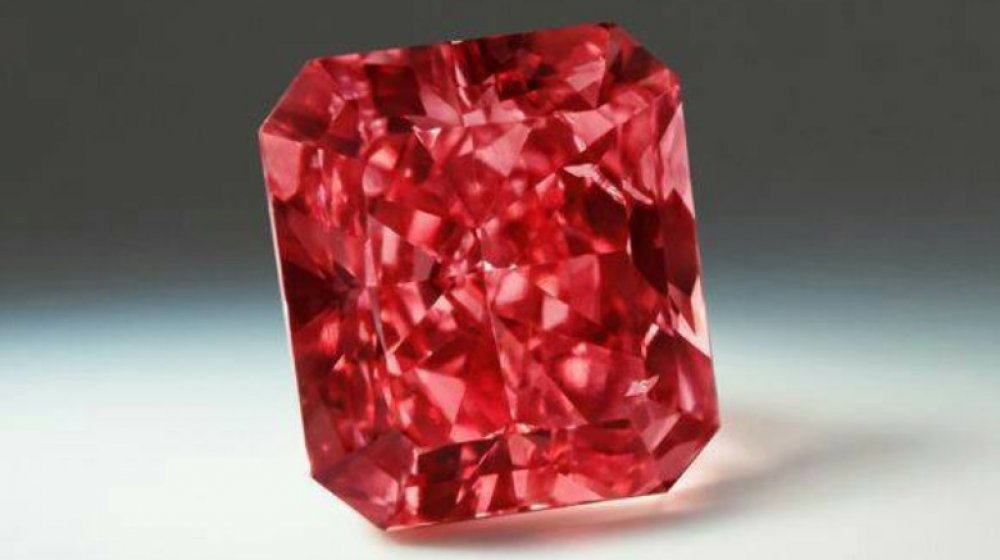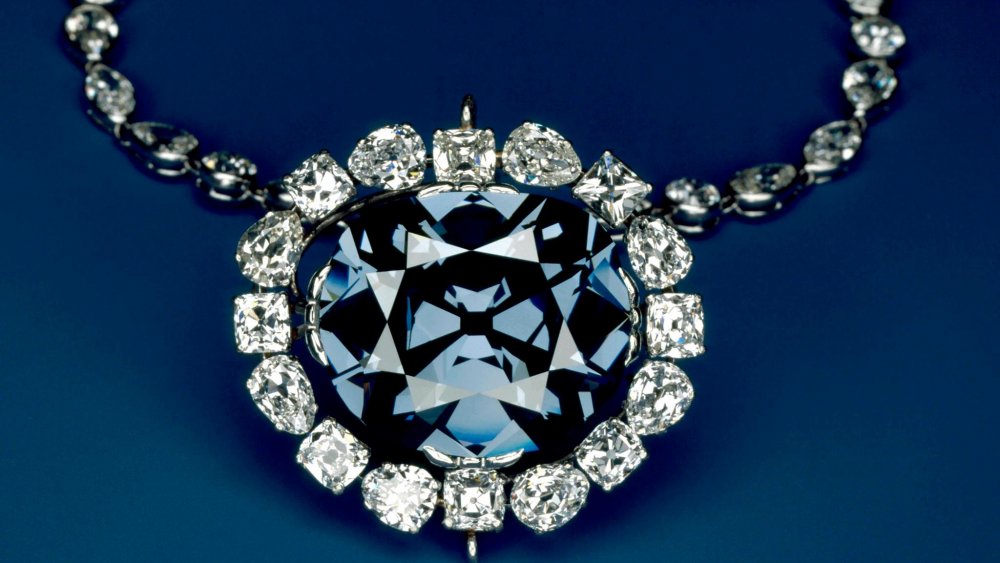The Untold Truth Of Diamonds
What do we know about diamonds? According to Marilyn Monroe, "Diamonds are a girl's best friend," while James Bond tells us that Diamonds Are Forever. The Beatles referenced them in the sky with Lucy, while the artist formerly known as The Artist Formerly Known as Prince paired them in song with the less-sparkly pearls. You may know someone who's a diamond in the rough, and diamonds are the go-to metaphor anytime you want to express how hard and/or bright something is.
Diamonds are also practically synonymous with love and romance and especially marriage — although this is actually a fairly modern phenomenon, according to an article written by Vinit Mehta, CEO and Founder of Golkonda Diamonds, on Medium, owing its existence to some clever mid-century advertising backed up by TV and movies (the influencers of the 20th century). Oddly enough, though, the one thing most diamonds aren't, is particularly valuable. Nor are they all that great of an investment, at least not compared to other commodities such as gold, silver, or pork belly futures (whatever those are). Still, they are undeniably shiny, pretty, and fun — and speaking of fun, here are a few facts about these sparklers that may be new to you.
Diamonds are really, really old
WP Diamonds revealed that most naturally-occurring diamonds are over a billion years old — that's billion with a b! According to the National Center for Science Education, this was a time when the earth was populated solely by single-celled organisms — none of whom were too interested in pursuing relationships with other SCOs, much less staging romantic proposals, so the diamonds of that era weren't in high demand. In fact, some diamonds are even older than that. Diamonds have been found that date back 3.3 billion years, which is 2/3 as long as the earth itself has been around.
As to how diamonds were formed in that long-ago time, they were actually spewed out of volcanoes! Global warming, it seems, was a bit of an issue back then as well, and the planet was so hot that this created the perfect condition for diamonds to be formed 100 miles below the earth's surface. When volcanoes erupted, as they seemed to be doing constantly in those days, diamonds were carried up to the surface. In the intervening millennia (billennia?), though, many of them sunk back down to the depths of a few hundred meters (via 911 Metallurgist), hence the need to mine them. While diamonds without inclusions (dark spots inside the gem) are worth more money, the inclusions are actually an indicator of the diamond's age and history and are of great interest to scientists.
Red diamonds are extremely rare – and about to become even rarer
When we think of a diamond, we usually picture one that is clear and colorless, and this is actually the most common type. Diamonds form when graphite subject to intense heat and pressure changes into the crystalline structure that is a raw diamond. When nothing interferes with this process, the result will be a "white" diamond. Occasionally, though, certain changes in the environment can result in a colored diamond. Of all diamond colors other than clear, brown is the most common. Yellow and green are fairly rare, as is pink, but the rarest diamond of all, according to The Diamond Authority, is one that is red.
Well, the truly bad news, if you had your heart set on a red diamond, is that, as WP Diamonds relates, 90 percent of these are produced by the Argyle mine in Australia, and yet the mine is scheduled to close down this year. Why? Because their diamond supply is almost depleted. According to the mine's business manger Josephine Archer, "a whole year's worth of production of stones over half a carat would fit in the palm of your hand," and she's speaking of the far commoner pink ones, not just the rare reds.
The Hope Diamond isn't the only diamond with a curse
Ah, cursed diamonds. Yes, that's a thing. Perhaps the most notorious of all cursed diamonds is the misnamed Hope Diamond. Among its past possessors were King Louis XVI and Marie Antoinette of France, who quite lost their heads over it (actually over a number of things, most of them angry French revolutionaries). Its most recent private owner, heiress Evalyn McLean, lost two of her children to accidents, while her ex-husband died in a mental institution. The Hope Diamond's current owner, the Smithsonian Institution, seems to have had better luck, however. The Gemological Institute of America reveals that this diamond arrived at its new home via the U.S. mail, and amazingly arrived both on time and intact.
Ritani shares stories of several other cursed diamonds. The Black Orlov was said to have triggered the suicide of one of the Orlovs as well as that of a diamond dealer, both deaths caused by jumping from tall buildings. The Sancy Diamond is thought to be cursed because it's had such a history of disappearing throughout the centuries. One time it reappeared in quite a gruesome manner, as well — turning up in the stomach of a murdered man during an autopsy. The Koh-i-Noor diamond causes bad luck for men, but the women who possess it seem to be immune to its malevolence. It currently adorns the coronation crown of the Queen Mother, and the beloved elder royal who last wore it died at the extremely uncursed age of 102.



